- Home
- Sylvain Neuvel
Sleeping Giants
Sleeping Giants Read online
Sleeping Giants is a work of fiction. Names, places, characters, and incidents either are the product of the author’s imagination or are used fictitiously. Any resemblance to actual persons, living or dead, events, or locales is entirely coincidental.
Copyright © 2016 by Sylvain Neuvel
All rights reserved.
Published in the United States by Del Rey, an imprint of Random House, a division of Penguin Random House LLC, New York.
DEL REY and the HOUSE colophon are registered trademarks of Penguin Random House LLC.
Library of Congress Cataloging-in-Publication Data
Names: Neuvel, Sylvain.
Title: Sleeping giants / Sylvain Neuvel.
Description: New York : Del Rey, [2016] | Series: The themis files ; book 1
Identifiers: LCCN 2015040166| ISBN 9781101886694 (hardback : acid-free paper) | ISBN 9781101886700 (ebook)
Subjects: LCSH: Giants—Fiction. | Robots—Fiction. | Women physicists—Fiction. | Science fiction. | BISAC: FICTION / Science Fiction / Adventure. | FICTION / Technological. | FICTION / Action & Adventure.
Classification: LCC PR9199.4.N476 S58 2016 | DDC 813/.6—dc23
LC record available at https://lccn.loc.gov/2015040166
eBook ISBN 9781101886700
randomhousebooks.com
Book design by Elizabeth A. D. Eno, adapted for ebook
Cover design: Faceout Studio, Charles Brock
Cover illustrations: © Shutterstock (starfield), Charles Brock (symbols), © RYGERSZEM/Thinkstock (gears)
v4.1
ep
Contents
Cover
Title Page
Copyright
Prologue
Part One: Body Parts
File No. 003
File No. 004
File No. 007
File No. 009
File No. 017
File No. 031
File No. 033
File No. 034
Part Two: Break a Leg
File No. 037
File No. 039
File No. 041
File No. 042
File No. 047
File No. 092
File No. 093
File No. 094
File No. 118
Part Three: Headhunting
File No. 120
File No. 121
File No. 126
File No. 129
File No. 141
File No. 143
File No. 161
File No. 182
File No. 188
File No. 189
Part Four: Body Blow
File No. 211
File No. 229
File No. 230
File No. 233
File No. 237
File No. 239
File No. 249
File No. 250
Part Five: Up in Arms
File No. 251
File No. 252
File No. 253
File No. 254
File No. 255
File No. 256
File No. 257
File No. 263
Epilogue
File No. 360
Dedication
Acknowledgments
About the Author
PROLOGUE
It was my eleventh birthday. I’d gotten a new bike from my father: white and pink, with tassels on the handles. I really wanted to ride it, but my parents didn’t want me to leave while my friends were there. They weren’t really my friends though. I was never really good at making friends. I liked reading; I liked walking in the woods; I liked being alone. And I always felt a little out of place with other kids my age. So when birthdays came by, my parents usually invited the neighbors’ kids over. There were a lot of them, some whose names I barely knew. They were all very nice, and they all brought gifts. So I stayed. I blew out the candles. I opened the presents. I smiled a lot. I can’t remember most of the gifts because all I could think about was getting out and trying that bicycle. It was about dinnertime by the time everyone left and I couldn’t wait another minute. It would soon be dark; once it was, my father wouldn’t let me leave the house until morning.
I snuck out the back door and pedaled as fast as I could into the woods at the end of the street. It must have been ten minutes before I started slowing down. Perhaps it was getting a little too dark for comfort and I was thinking about going back. Maybe I was just tired. I stopped for a minute, listening to the wind throwing the branches around. Fall had arrived. The forest had turned into a motley landscape and given new depth to the hillsides. The air suddenly got cold and wet, as if it were about to rain. The sun was going down and the sky behind the trees was as pink as those tassels.
I heard a crack behind me. It could have been a hare. Something drew my eye to the bottom of the hill. I left my bicycle on the trail and started slowly making my way down, moving branches out of my way. It was hard to see, as the leaves hadn’t fallen yet, but there was this eerie turquoise glow seeping through the branches. I couldn’t pinpoint where it came from. It wasn’t the river; I could hear that in the distance, and the light was much closer. It seemed to be coming from everything.
I got to the bottom of the hill. Then the ground disappeared from under my feet.
I don’t remember much after that. I was out for several hours and the sun was coming up when I came to. My father was standing about fifty feet above me. His lips were moving, but I couldn’t hear a sound.
The hole I was in was perfectly square, about the size of our house. The walls were dark and straight with bright, beautiful turquoise light shining out of intricate carvings. There was light coming out of just about everything around me. I moved my hands around a bit. I was lying on a bed of dirt, rocks, and broken branches. Underneath the debris, the surface was slightly curved, smooth to the touch, and cold, like some type of metal.
I hadn’t noticed them before, but there were firemen above, yellow jackets buzzing around the hole. A rope fell a few feet from my head. Soon, I was strapped onto a stretcher and hoisted into daylight.
My father didn’t want to talk about it afterward. When I asked what I had fallen into, he just found new clever ways of explaining what a hole was. It was about a week later that someone rang the doorbell. I called for my father to go, but I got no answer. I ran down the stairs and opened the door. It was one of the firemen that had gotten me out of the hole. He’d taken some pictures and thought I’d like to see them. He was right. There I was, this tiny little thing at the bottom of the hole, lying on my back in the palm of a giant metal hand.
FILE NO. 003
INTERVIEW WITH DR. ROSE FRANKLIN, PH.D., SENIOR SCIENTIST, ENRICO FERMI INSTITUTE
Location: University of Chicago, Chicago, IL
—How big was the hand?
—6.9 meters, about twenty-three feet; though it seemed much larger for an eleven-year-old.
—What did you do after the incident?
—Nothing. We didn’t talk about it much after that. I went to school every day like any kid my age. No one in my family had ever been to college, so they insisted I keep going to school. I majored in physics.
I know what you’re going to say. I wish I could tell you I went into science because of the hand, but I was always good at it. My parents figured out I had a knack for it early on. I must have been four years old when I got my first science kit for Christmas. One of those electronics kits. You could make a telegraph, or things like that, by squeezing wires into little metal springs. I don’t think I would have done anything different had I listened to my father and stayed home that day.
Anyway, I graduated from college and I kept doing the only thing I knew how to do. I went to school. You should have seen my dad when we
learned I was accepted at the University of Chicago. I’ve never seen anyone so proud in my life. He wouldn’t have been any happier had he won a million dollars. They hired me at the U of C after I finished my Ph.D.
—When did you find the hand again?
—I didn’t. I wasn’t looking for it. It took seventeen years, but I guess you could say it found me.
—What happened?
—To the hand? The military took over the site when it was discovered.
—When was that?
—When I fell in. It took about eight hours before the military stepped in. Colonel Hudson—I think that was his name—was put in charge of the project. He was from the area so he knew pretty much everyone. I don’t remember ever meeting him, but those who did had only good things to say about the man.
I read what little was left of his notes—most of it was redacted by the military. In the three years he spent in charge, his main focus had always been figuring out what those carvings meant. The hand itself, which is mostly referred to as “the artifact,” is mentioned in passing only a few times, evidence that whoever built that room must have had a complex enough religious system. I think he had a fairly precise notion of what he wanted this to be.
—What do you think that was?
—I have no idea. Hudson was career military. He wasn’t a physicist. He wasn’t an archaeologist. He had never studied anything resembling anthropology, linguistics, anything that would be remotely useful in this situation. Whatever preconceived notion he had, it must have come from popular culture, watching Indiana Jones or something. Fortunately for him, he had competent people surrounding him. Still, it must have been awkward, being in charge and having no idea what’s going on most of the time.
What’s fascinating is how much effort they put into disproving their own findings. Their first analysis indicated the room was built about three thousand years ago. That made little sense to them, so they tried carbon-dating organic material found on the hand. The tests showed it to be much older, somewhere between five thousand and six thousand years old.
—That was unexpected?
—You could say that. You have to understand that this flies in the face of everything we know about American civilizations. The oldest civilization we’re aware of was located in the Norte Chico region of Peru, and the hand appeared to be about a thousand years older. Even if it weren’t, it’s fairly obvious that no one carried a giant hand from South America all the way to South Dakota, and there were no civilizations as advanced in North America until much, much later.
In the end, Hudson’s team blamed the carbon dating on contamination from surrounding material. After a few years of sporadic research, the site was determined to be twelve hundred years old and classified as a worship temple for some offshoot of Mississippian civilization.
I went through the files a dozen times. There is absolutely nothing, no evidence whatsoever to support that theory, other than the fact that it makes more sense than anything the data would suggest. If I had to guess, I would say that Hudson saw no military interest whatsoever in all this. He probably resented seeing his career slowly wither in an underground research lab and was eager to come up with anything, however preposterous, just to get out of there.
—Did he?
—Get out? Yes. It took a little more than three years, but he finally got his wish. He had a stroke while walking his dog and slipped into a coma. He died a few weeks later.
—What happened to the project after he died?
—Nothing. Nothing happened. The hand and panels collected dust in a warehouse for fourteen years until the project was demilitarized. Then the University of Chicago took over the research with NSA funding and somehow I was put in charge of studying the hand I fell in when I was a child. I don’t really believe in fate, but somehow “small world” doesn’t begin to do this justice.
—Why would the NSA get involved in an archaeological project?
—I asked myself the same question. They fund all kinds of research, but this seems to fall outside their usual fields of interest. Maybe they were interested in the language for cryptology; maybe they had an interest in the material the hand is made of. In any case, they gave us a pretty big budget so I didn’t ask too many questions. I was given a small team to handle the hard science before we handed everything over to the anthropology department. The project was still classified as top secret and, just like my predecessor, I was moved into an underground lab. I believe you’ve read my report, so you know the rest.
—Yes, I have read it. You sent your report after only four months. Some might think it was a little hasty.
—It was a preliminary report, but yes. I don’t think it was premature. OK, maybe a little, but I had made significant discoveries and I didn’t think I could go much further with the data that I had, so why wait? There is enough in that underground room to keep us guessing for several lifetimes. I just don’t think we have the knowledge to get much more out of this without getting more data.
—Who is we?
—Us. Me. You. Mankind. Whatever. There are things in that lab that are just beyond our reach right now.
—Ok, so tell me about what you do understand. Tell me about the panels.
—It’s all in my report. There are sixteen of them, approximately ten feet by thirty-two feet each, less than an inch thick. All sixteen panels were made around the same period, approximately three thousand years ago. We…
—If I may. I take it you do not subscribe to the cross-contamination theory?
—As far as I’m concerned, there’s no real reason not to trust the carbon dating. And to be honest, how old these things are is the least of our problems. Did I mention the symbols have been glowing for the last seventeen years, with no apparent power source?
Each wall is made of four panels and has a dozen rows of eighteen to twenty symbols carved into it. Rows are divided into sequences of six or seven symbols. We counted fifteen distinct symbols in total. Most are used several times, some appear only once. Seven of them are curvy, with a dot in the center, seven are made of straight lines, and one is just a dot. They are simple in design but very elegant.
—Had the previous team been able to interpret any of the markings?
—Actually, one of the few sections of Hudson’s report left intact by the military was the linguistic analysis. They had compared the symbols to every known writing system, past or present, but found no interesting correlation. They assumed each sequence of symbols represented a proposition, like an English sentence, but with no frame of reference, they couldn’t even speculate as to their interpretation. Their work was thorough enough and documented at every step. I saw no reason to do the same thing twice and I declined the offer to add a linguist to the team. With nothing to compare this to, there was logically no way to arrive at any sort of meaning.
Perhaps I was biased—because I stumbled onto it—but I felt drawn to the hand. I couldn’t explain it, but every fiber of my being was telling me the hand was the important piece.
—Quite a contrast from your predecessor. So what can you tell me about it?
—Well, it’s absolutely stunning, but I assume you’re not that interested in aesthetics. It measures 22.6 feet in length from the wrist to the tip of the middle finger. It seems to be solid, made of the same metallic material as the wall panels, but it’s at least two thousand years older. It is dark gray, with some bronze overtones, and it has subtle iridescent properties.
The hand is open, fingers close together, slightly bent, as if holding something very precious, or a handful of sand, trying not to spill it. There are grooves where human skin would normally fold, others that seem purely decorative. All are glowing the same bright turquoise, which brings out the iridescence in the metal. The hand looks strong, but…sophisticated is the only word that comes to mind. I think it’s a woman’s hand.
—I am more interested in facts at this point. What is this strong but sophisticated hand made of?
&nb
sp; —It proved nearly impossible to cut or otherwise alter by conventional means. It took several attempts to remove even a small sample from one of the wall panels. Mass spectrography showed it to be an alloy of several heavy metals, mostly iridium, with about 10 percent iron and smaller concentrations of osmium, ruthenium, and other metals of the platinum group.
—It must be worth its weight in gold?
—It’s funny you should mention that. It doesn’t weigh as much as it should so I’d say it’s worth a lot more than its weight, in anything.
—How much does it weigh?
—Thirty-two metric tons…I know, it’s a respectable weight, but it’s inexplicably light given its composition. Iridium is one of the densest elements, arguably the densest, and even with some iron content, the hand should easily weigh ten times as much.
—How did you account for that?
—I didn’t. I still can’t. I couldn’t even speculate as to what type of process could be used to achieve this. In truth, the weight didn’t bother me nearly as much as the sheer amount of iridium I was looking at. Iridium is not only one of the densest things you can find, it’s also one of the rarest.
You see, metals of this group—platinum is one of them—love to bond with iron. That’s what most of the iridium on Earth did millions of years ago when the surface was still molten and, because it’s so heavy, it sunk to the core, thousands of miles deep. What little is left in the Earth’s crust is usually mixed with other metals and it takes a complex chemical process to separate them.

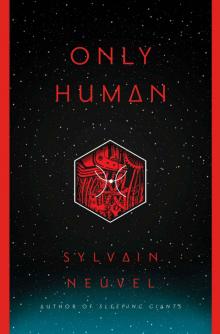 Only Human
Only Human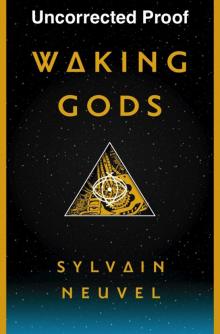 Waking Gods
Waking Gods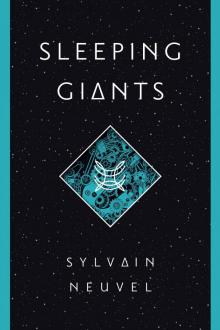 Sleeping Giants
Sleeping Giants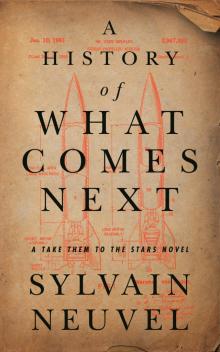 A History of What Comes Next
A History of What Comes Next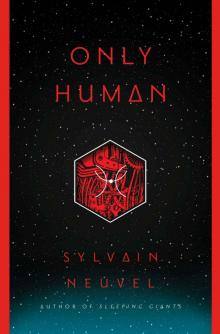 Only Human_The Themis Files
Only Human_The Themis Files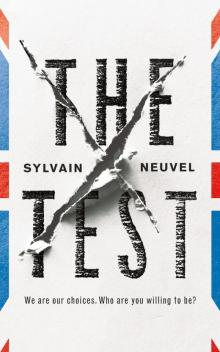 The Test
The Test